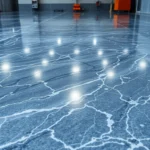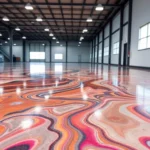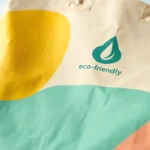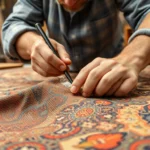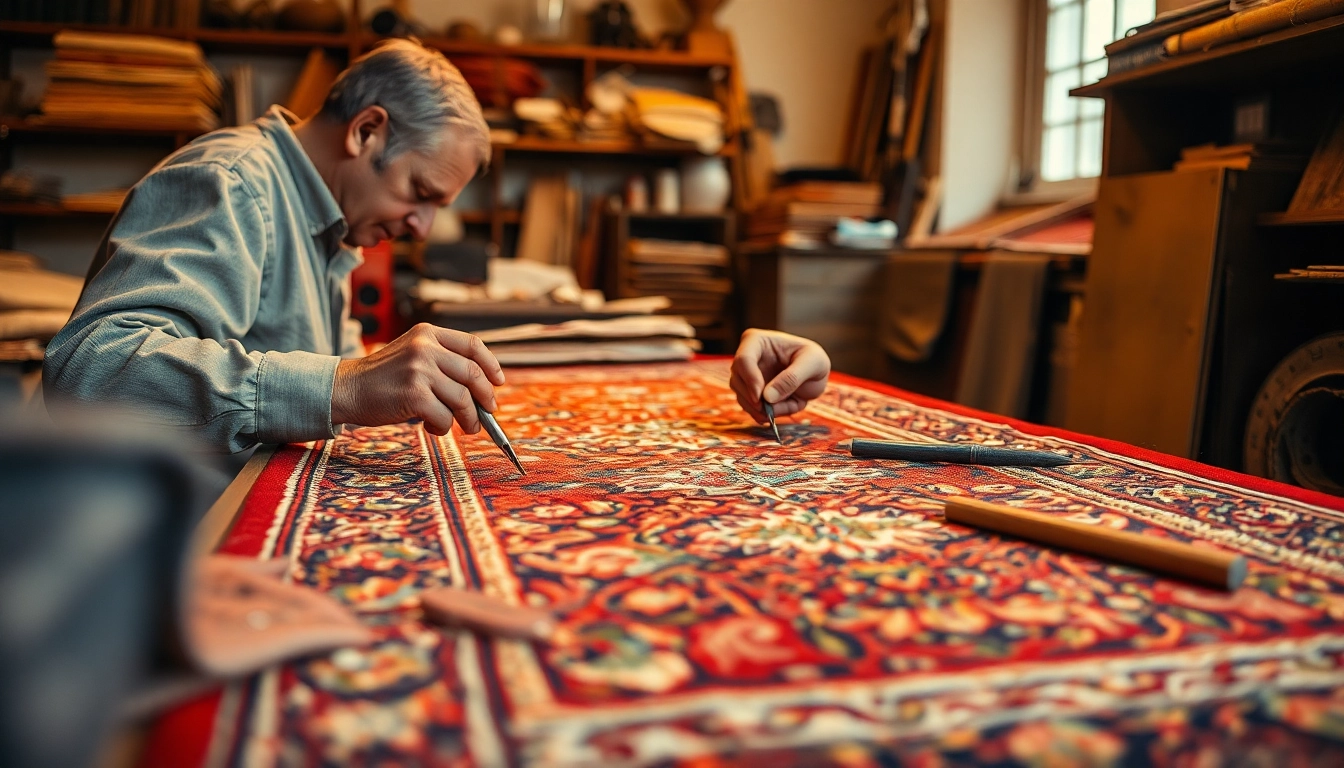Understanding Restauro Tappeti Milano: Techniques and Benefits
Restoro Tappeti Milano, or rug restoration in Milan, is a specialized craft that combines traditional artistry with modern conservation techniques to preserve the beauty, integrity, and cultural significance of valuable carpets. Whether dealing with antique Persian rugs, modern installments, or contemporary textile art, professional restoration ensures that these treasured items withstand the test of time while retaining their aesthetic and monetary value. To fully appreciate the importance of expert restoration, it’s essential to understand what the process entails, the benefits it offers, and the key considerations involved in selecting the right service provider.
For those seeking expert restoration services, exploring options like Restauro Tappeti milano can be an excellent starting point. These professionals bring decades of experience, specialized techniques, and a deep respect for cultural heritage to every project.
What Does Restauro Tappeti Milano Entail?
Restauro Tappeti Milano encompasses a range of meticulous procedures aimed at repairing physical damage, restoring appearance, and preserving the historical value of rugs. The process begins with a comprehensive assessment of the carpet’s condition, including examining material integrity, dye stability, knot density, and existing damages such as tears, fraying, or stains.
Once evaluated, restoration specialists employ a variety of techniques tailored to the specific needs of the rug. These methods include cleaning and stain removal, repairing tears and holes, reweaving or patching damaged sections, restoring faded dyes, and reinforcing the rug’s structure. Advanced tools like hand-woven patching, geometric reweaving, and even chemical treatments for color stabilization are frequently utilized to achieve seamless repairs.
Key Benefits of Professional Tapestry Restoration
Engaging in professional restoration offers multiple advantages, including:
- Preservation of Cultural Heritage: Restoring antique and traditional rugs maintains their historical significance and artistic value.
- Enhanced Aesthetic Appeal: Repairing damages and revitalizing colors significantly improves visual quality.
- Increased Longevity: Proper restoration reinforces material stability, preventing further deterioration.
- Higher Resale Value: Well-restored rugs can command premium prices in the collector’s market.
- Environmental Sustainability: Restoration extends the life of existing textiles, reducing waste and the demand for new resources.
Common Restoration Challenges and Solutions
While restoration is a highly effective process, it also presents challenges:
- Dye Fading or Bleeding: Using specialized chemical stabilization techniques can prevent further color loss and bleeding during cleaning.
- Fragile Materials: Antique rugs often require gentle handling and reinforcement from expert conservators to avoid accidental damage.
- Matching Original Colors and Patterns: Skilled artisans employ detailed color-matching and weaving techniques to ensure seamless repairs.
- Addressing Hidden Damages: Microfractures or structural weaknesses may not be visible initially; thorough inspection and conservative intervention minimize risks.
Employing experienced specialists familiar with regional weaving techniques and traditional craftsmanship is critical to overcoming these challenges effectively.
Choosing the Right Restauro Tappeti Milano Service
Factors to Consider When Selecting a Restoration Specialist
Not all restoration services are equal. To ensure optimal results, consider these factors:
- Experience and Reputation: Look for companies with a longstanding history and positive client feedback, such as Persia&Tappeti or Babaei Carpets.
- Specialization: Choose providers experienced in handling the specific type of rug you own—antique, Persian, Oriental, or contemporary.
- Techniques and Equipment: Verify that they use contemporary, yet respectful, techniques aligned with traditional craftsmanship.
- Certifications and Credentials: Ensure they have recognized certifications in textile conservation or restoration.
Questions to Ask Before Starting Restoration
Before committing, inquire about:
- Estimated costs and timeframes
- Previous projects similar to your rug
- Restoration techniques and materials used
- Warranty and post-restoration care instructions
How to Verify Credentials and Experience
Request references, examine credentials, and review before-and-after photos of previous restorations. Visiting their workshop or consulting independent reviews can also provide insight into their professionalism and expertise.
The Restoration Process for Tappeti in Milan
Initial Evaluation and Damage Assessment
Restoration begins with a detailed consultation where experts assess the extent of damage, identify underlying structural issues, and discuss restoration goals. This stage includes using microscopic examination tools for internal damage detection and color tests to evaluate dye stability.
Restoration Techniques for Different Types of Rugs
Depending on the rug’s origin and condition, techniques may vary. For instance:
- Persian Rugs: Emphasis on reweaving broken knots and restoring intricate patterns.
- Antique Tapestries: Focused on preserving original material with minimal invasive procedures.
- Modern Rugs: Often require color correction and reinforcement of synthetic fibers.
Post-Restoration Care and Maintenance Tips
Proper care after restoration prolongs results. Recommendations include avoiding direct sunlight, regular gentle vacuuming, and professional cleaning every few years. Maintaining optimal humidity and avoiding harsh chemicals preserves the dye stability and structural integrity.
Costs and Value: What to Expect with Restauro Tappeti Milano
Pricing Range for Professional Restauro
The cost for restoring a rug varies widely based on size, complexity, and damage severity, typically ranging from $100 to over $2000. For example, minor repairs or cleaning might cost between $50 and $300, whereas extensive reweaving or dye restoration can reach higher figures.
Factors Influencing Restoration Costs
- Size of the Rug: Larger pieces naturally incur higher costs due to the increased labor and materials required.
- Type of Damage: Tears, stains, or structural weaknesses increase complexity and price.
- Age and Value: Antique or rare rugs often require extra care and specialized techniques, affecting pricing.
- Restoration Scope: Complete overhauls involving reweaving, dyeing, and structural reinforcement will be more expensive than surface cleaning.
Maximizing the Value and Longevity of Restored Rugs
Investing in high-quality restoration not only preserves your rug but can substantially increase its market value. Regular maintenance, proper storage, and professional cleaning also contribute to extending its lifespan and aesthetic appeal.
Preserving Cultural Heritage: Why Restauro Tappeti Milano Matters
The Cultural Significance of Antique Rugs
Antique and traditional rugs are repositories of history, craftsmanship, and regional identity. Restoring these works honors cultural legacy and keeps traditional weaving techniques alive for future generations.
Restoration as a Form of Art Conservation
Beyond their decorative function, high-quality restoration treats rugs as art objects. Conservation efforts safeguard craftsmanship, patterns, and dyes, maintaining authenticity and artistic integrity.
Impact on Resale Value and Aesthetic Appeal
Proper restoration can dramatically enhance a rug’s visual appeal and resale value, making it a savvy investment. Restored pieces often fetch higher prices and attract collectors or boutique buyers seeking genuine craftsmanship.
